- Home
- slideshows
- miscellaneous
- How a tiny Mexican art store in one of NYC's priciest neighborhoods has thrived for 20 years despite skyrocketing rents
How a tiny Mexican art store in one of NYC's priciest neighborhoods has thrived for 20 years despite skyrocketing rents
The store immediately welcomes customers into a celebration of Mexican culture.

The wide array of decor, clothing, and art evoke what it's like to walk into a gift shop in Mexico.
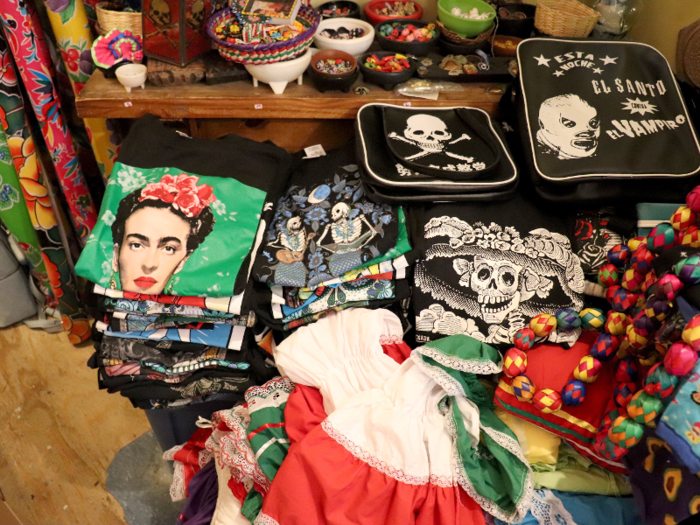
Stacks of clothes and textiles line the rough, wooden floors and remnants of old, blue linoleum tiles. An aisle of walking space gives just enough room for two people to awkwardly side-step to switch places.
Leor is a self-proclaimed shopaholic, but only when buying for her store.
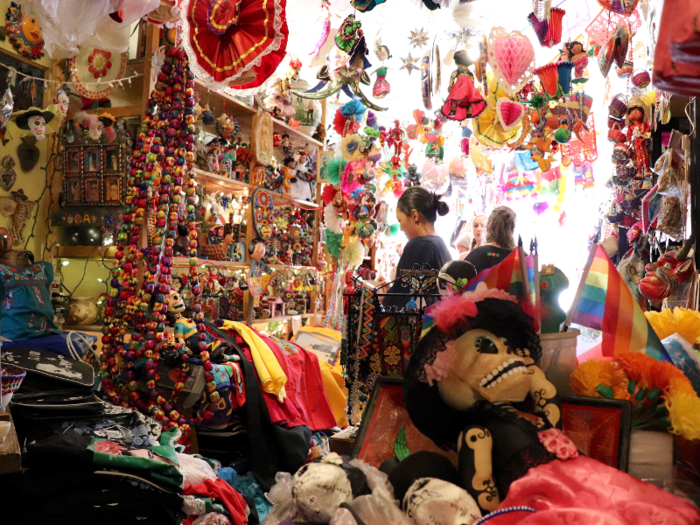
"Right now it's less breathable than it used to be," said Leor. "I don't want to get rid of stuff because I want everything to show."
The moment customers walk in, Leor jumps up to show them around and teach them about Mexican culture.
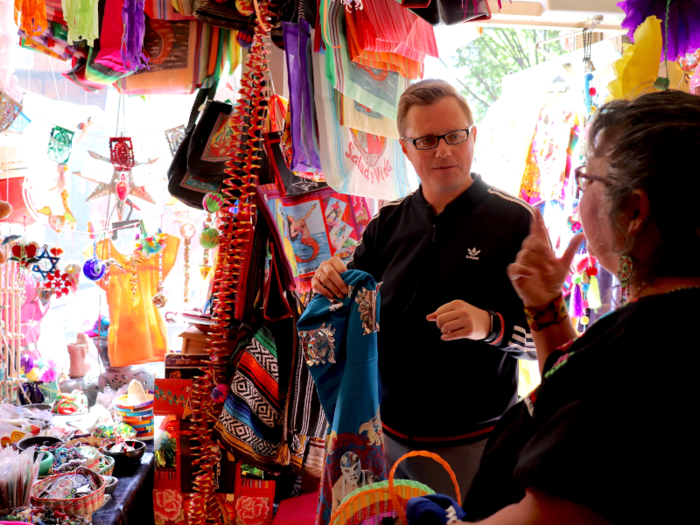
Alex Hunter, from London, was on a work trip when he found La Sirena. "You get a real sense for the art," said Hunter. His children are fascinated with Mexican culture, so he bought luchadores masks to bring back home for them.
Leor taught one woman about the Mexican symbols and traditions of the pieces she liked.
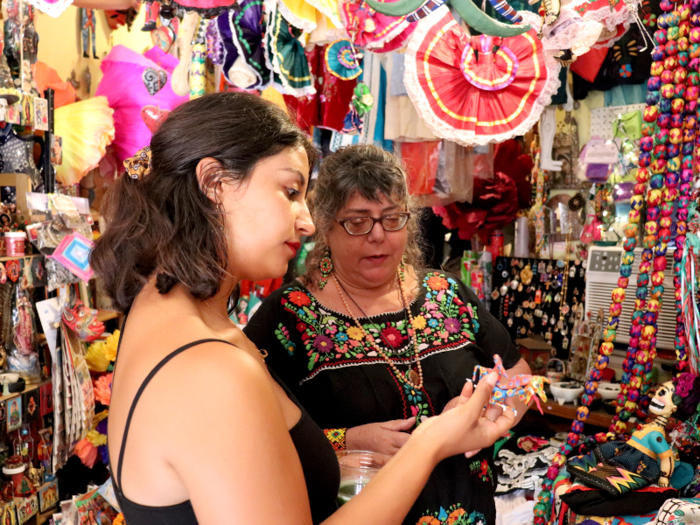
Alina Chigri, traveling from Germany, came into the store with a friend to find a memento of her trip. "I felt welcomed, really warm," said Chigri.
A costume designer came in to find Mexican dresses for a play.
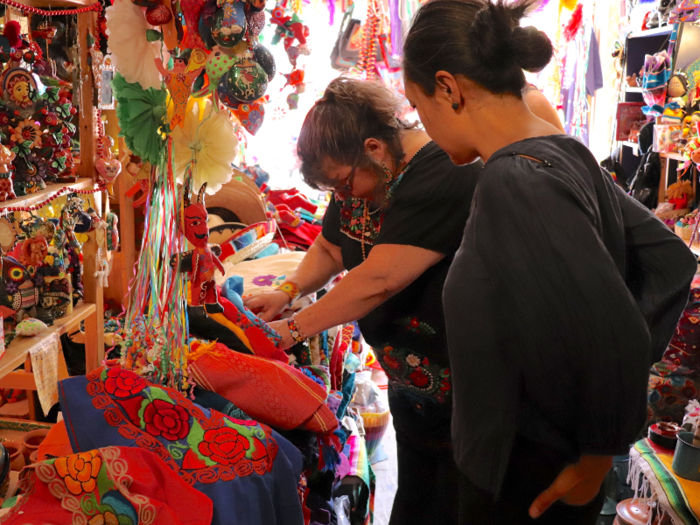
Linda Cho is a costume designer for "Chasing Rainbows" at the Paper Mill Playhouse. She needed costumes for the production, and Leor helped her sift through stacks of traditional embroidered dresses.
We need more stores like this, but the only resources we have left now are online," said Cho.
La Sirena is celebrating 20 years in business this year, but Leor started collecting Mexican art much earlier.
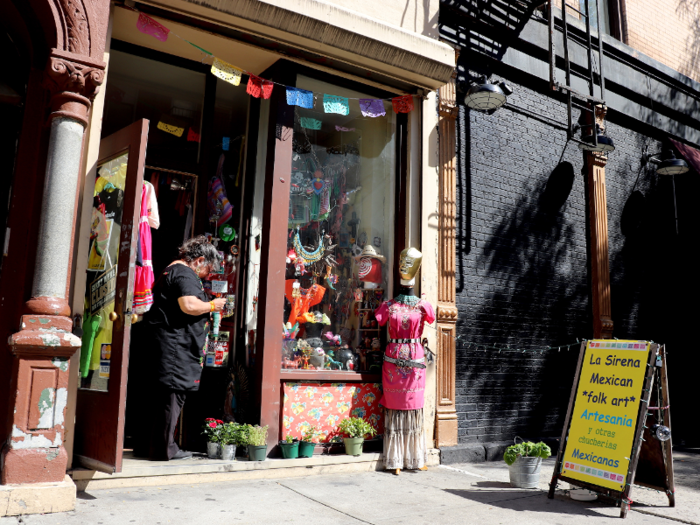
When Leor was nine years old, she joined her Argentine mother on a trip to Mexico. She had such a good time, she didn't want to leave — and it began a life-long interest in Mexican culture.
Leor became a carpenter and art therapist. She made trips back to Mexico any chance she had.
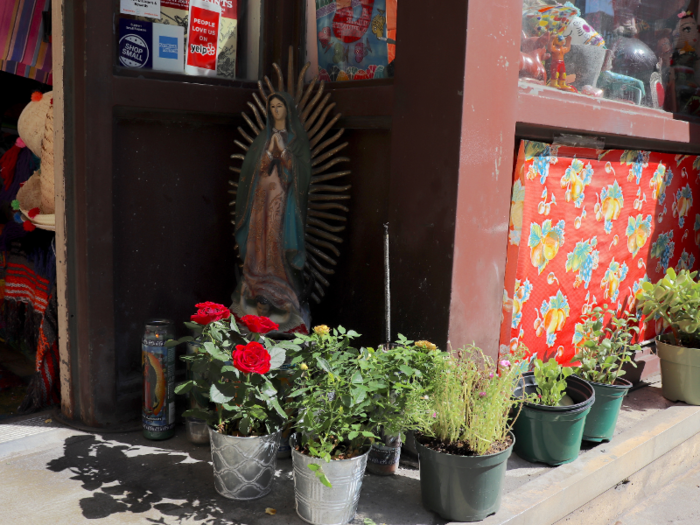
"I'd always feel like my heart was being torn out on my way home," said Leor.
Most of all, she loved visiting artisans and buying their pieces to take back home.
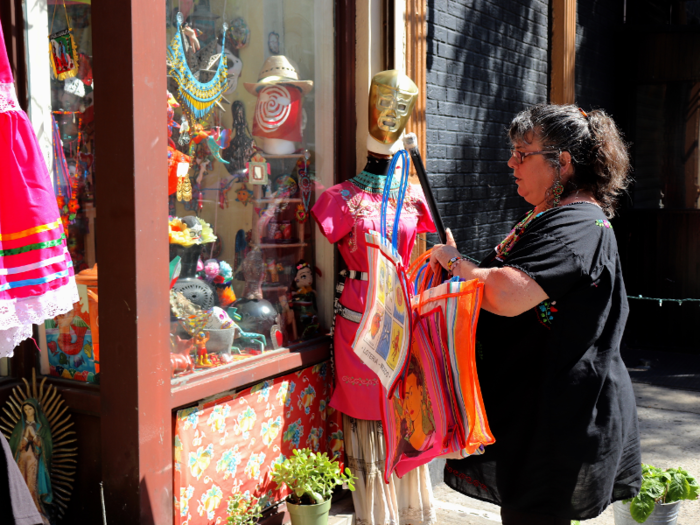
In New York, people stopped her on the street to ask about her mercado bags.
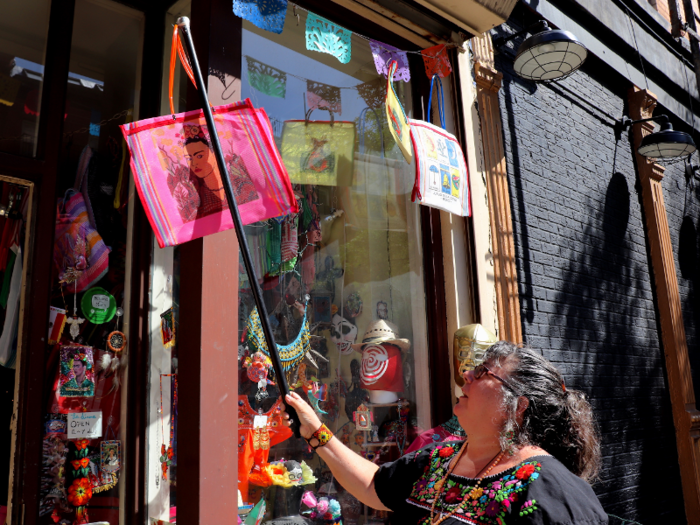
She'd take their numbers and promise to grab them one on her next trip to Mexico.
A mercado bag is a tote bag usually made with woven plastic. It's typically used for shopping at the market or grocery store.
Leor collected so much art that one of the rooms in her home became a storage space.
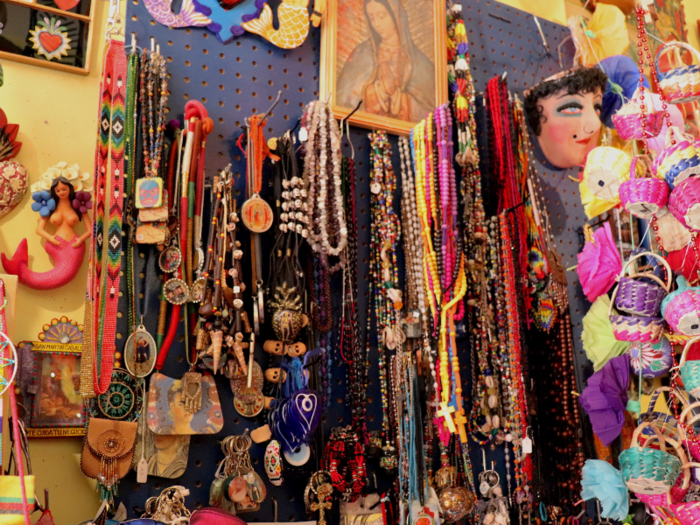
While teaching at Bellevue Hospital, she held lunchtime markets in her classroom to sell pieces to other teachers.
'I'd never thought of having a store. Ever.'
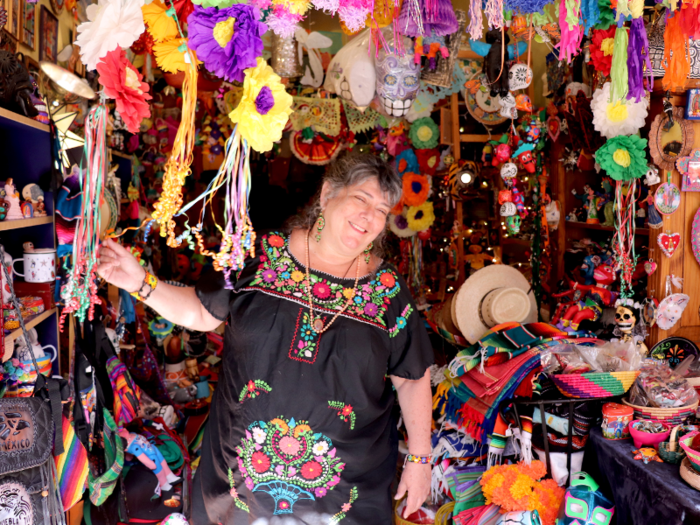
Leor says she was laid off from her job at Bellevue in roughly 1997, and she planned to start up an at-home daycare while selling her pieces elsewhere in the East Village on the weekends.
Then she came across an empty storefront. "I never thought of having a store, ever," said Leor. Yet, she found herself asking if the space was available.
She rented the front of the space for $500, while a designer rented out the back.
Leor didn't have much knowledge about building a business, but what someone may see as a disadvantage, she sees as her advantage.

"I feel like all my ignorance throughout all of this has been fabulous because it let me do things that I wouldn't have done otherwise," said Leor.
Before she accepted credit cards, she kept a little box for her money.
On one of her buying trips to Mexico, Leor spent $9,000 on 11 crates of art she shipped to the US.
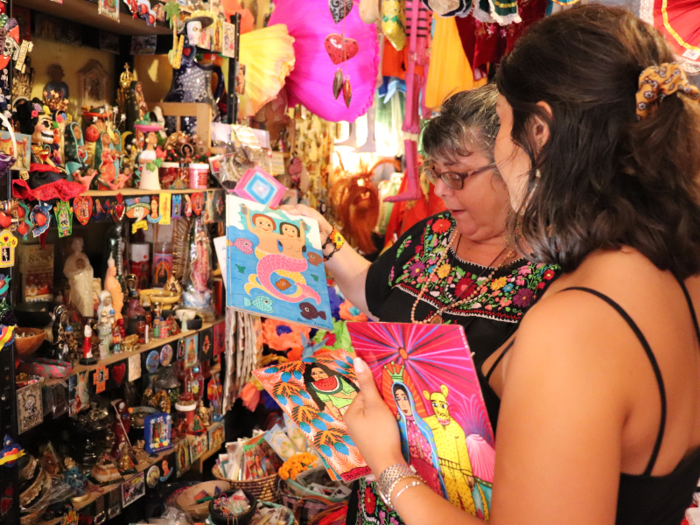
"I was spending everything I made, because I didn't know when I could go back again," she said.
While the crates were on the way, she said the landlord ended her lease about a year after she opened her shop. Leor went back to selling her pieces around the East Village and at street fairs. Meanwhile, 11 crates of Mexican art took up her entire living room.
About a year later, Leor found a real estate company looking for first-time store owners who couldn't afford spaces on their own.
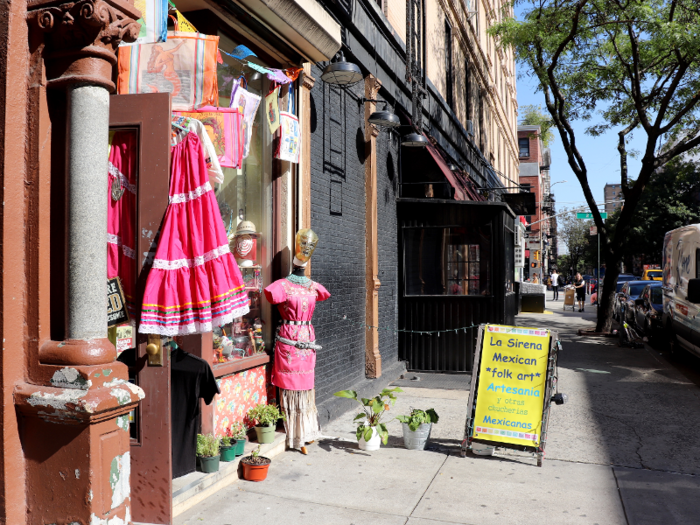
She applied, took out a loan of $5,000, and got her current space at 27 East 3rd Street right before the holidays.
She painted the walls yellow and covered the floors in blue linoleum tile. She says that if she'd known most of the tiles would break over time, she would have chosen wood.
With 10 crates of products left in her apartment, she didn't need to go back to Mexico before opening.

It took just two days to set up her store.
Hiring and managing employees is one of Leor's biggest challenges.
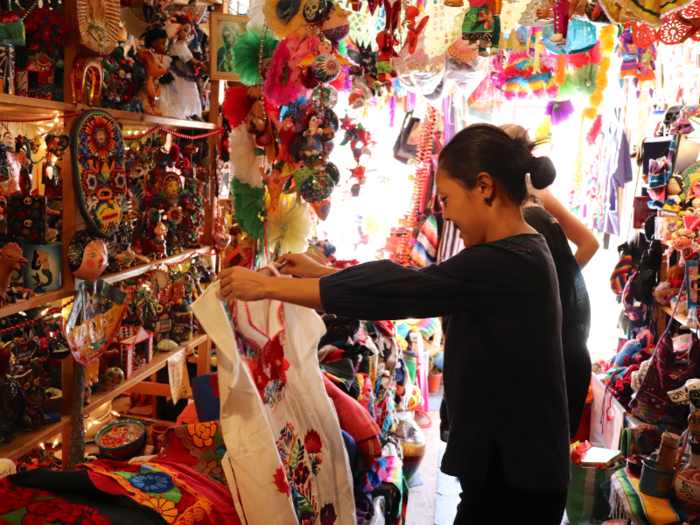
"I have great people and I've always really appreciated them and we've worked well together, but it's a lot of work," she said.
Owning a Mexican folk-art store, Leor feels an obligation to hire Spanish-speaking employees.
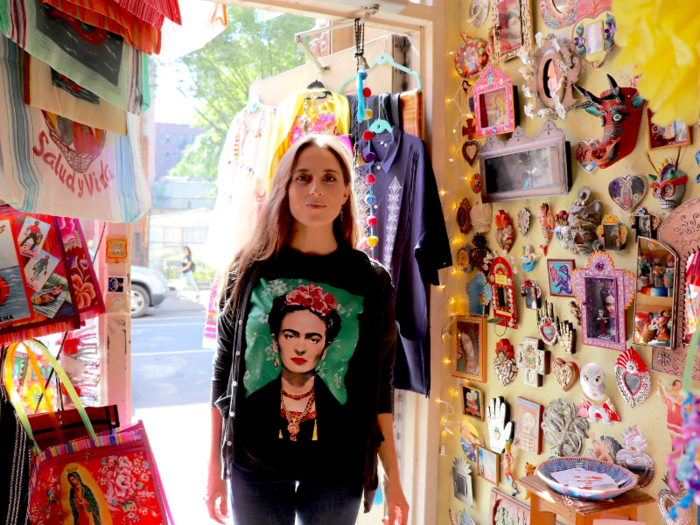
"If a whole family comes in, they can't feel comfortable because they can't speak the language that you're speaking to them," said Leor. "It just feels important to me."
Affording rent in New York City has been a persistent battle for Leor.
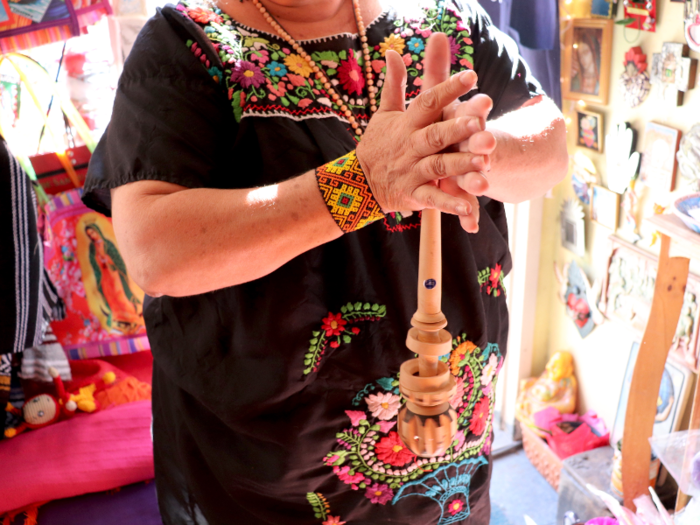
"I've been really tight, but I've always managed," she said. "The rent goes up and I'm not raising my prices. I just feel that if I do, I really think I'll lose more business that way."
About four years ago, she struggled with her management company (which has since changed) as it negotiated a new lease. She said that they wanted more than she could afford, sent her a 30-day notice to leave, and she prepared to look for a new place.
But then she called her local councilwoman, who knew Leor's landlord. The councilwoman called him to vouch for her. "I don't know what happened, but I ended up getting a clear lease," said Leor.
Business Insider reached out to the councilwoman for comment.
Her rent increases each year, but Leor said she'll likely stay because the rents in other parts of New York City are so exorbitant.
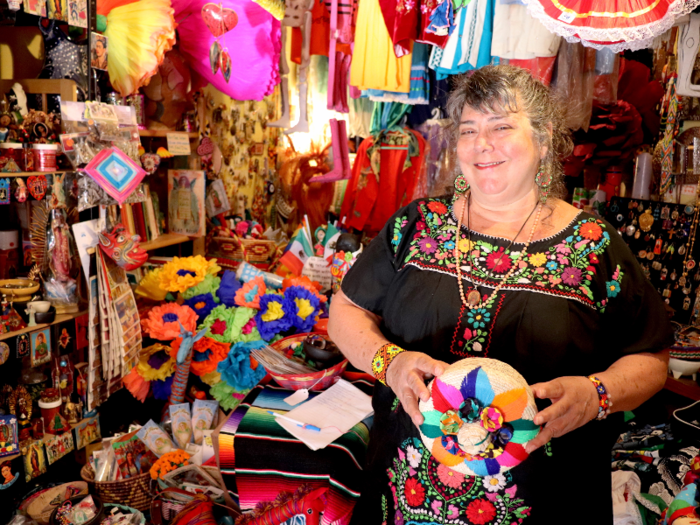
"To move to something else that's the same size doesn't make sense to me. I'd rather stay here unless I could get something bigger," said Leor.
It's her dream to move to a larger space where she can have a cultural center to host classes and events.
When Leor struggles financially, her strategy is to have big sales.
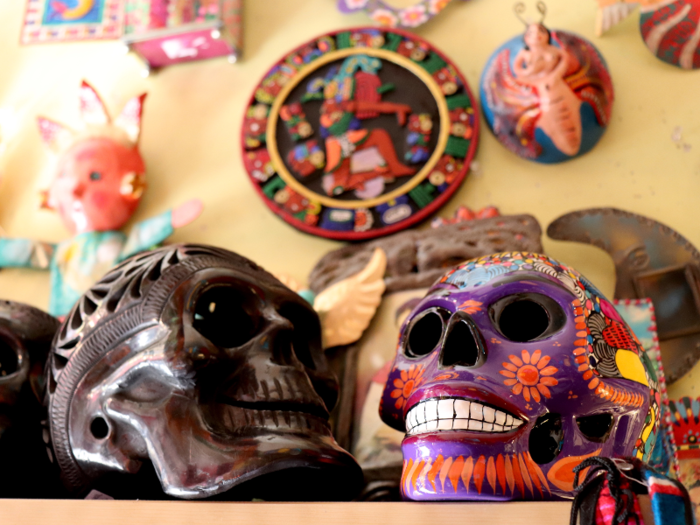
"Unfortunately, they don't seem to be as successful these days," she said. "Maybe my customers are Mexican folk-arts shopped out."
Community and art events also help boost her sales.
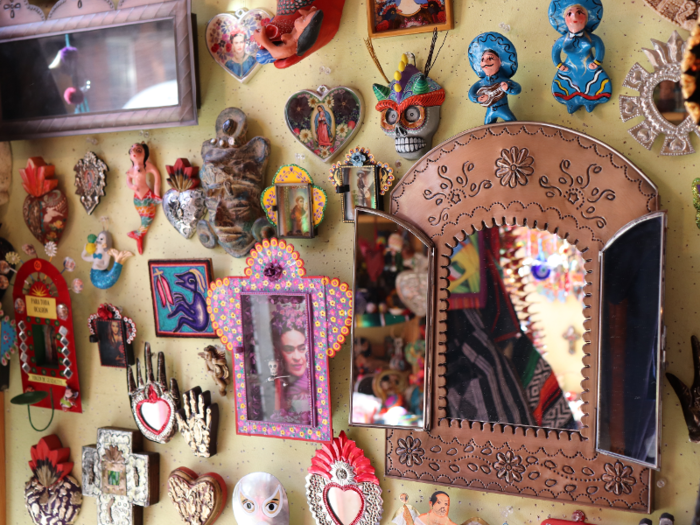
Brooklyn Museum purchased T-shirts from Leor for its Frida Kahlo exhibit, and she held a pop-up in the museum's gift shop.
She's having a shopping event for Día de Los Muertos on October 12 and 13; then she'll have tables set up at the Museum of Natural History's Día de Muertos festival in November.
Leor has noticed other stores in the area closing.
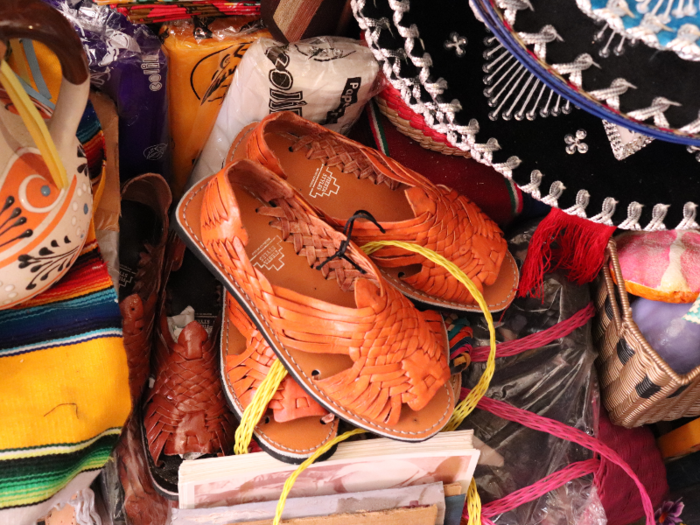
She used to hold an annual Mexico walking tour. It started at a Mexican restaurant and brought people around to other stores. She hasn't done it this year, partly because many of the stores have closed.
She couldn't pinpoint what's kept her store going, but said she doesn't know of any stores like hers that carry the same variety.
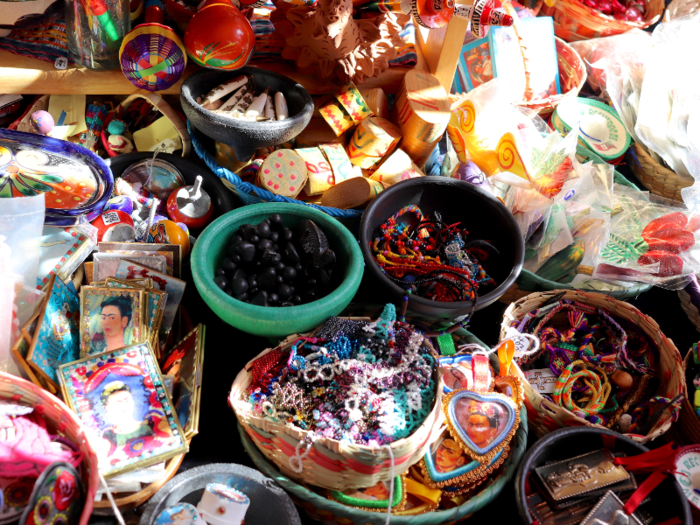
"I think just what we're doing attracts people," she said. "It's very heart-based."
"The fact that it's all handmade, people like that."
Advertising isn't worth the extra money for her, so Leor relies on social media and a 5,000-person email list to market her sales and events.

"I know it's kind of funny cause I am a business, but I probably don't think as business minded as most people do," she said.
"I just kind of do what I do and keep trucking."
Popular Right Now
Popular Keywords
Advertisement